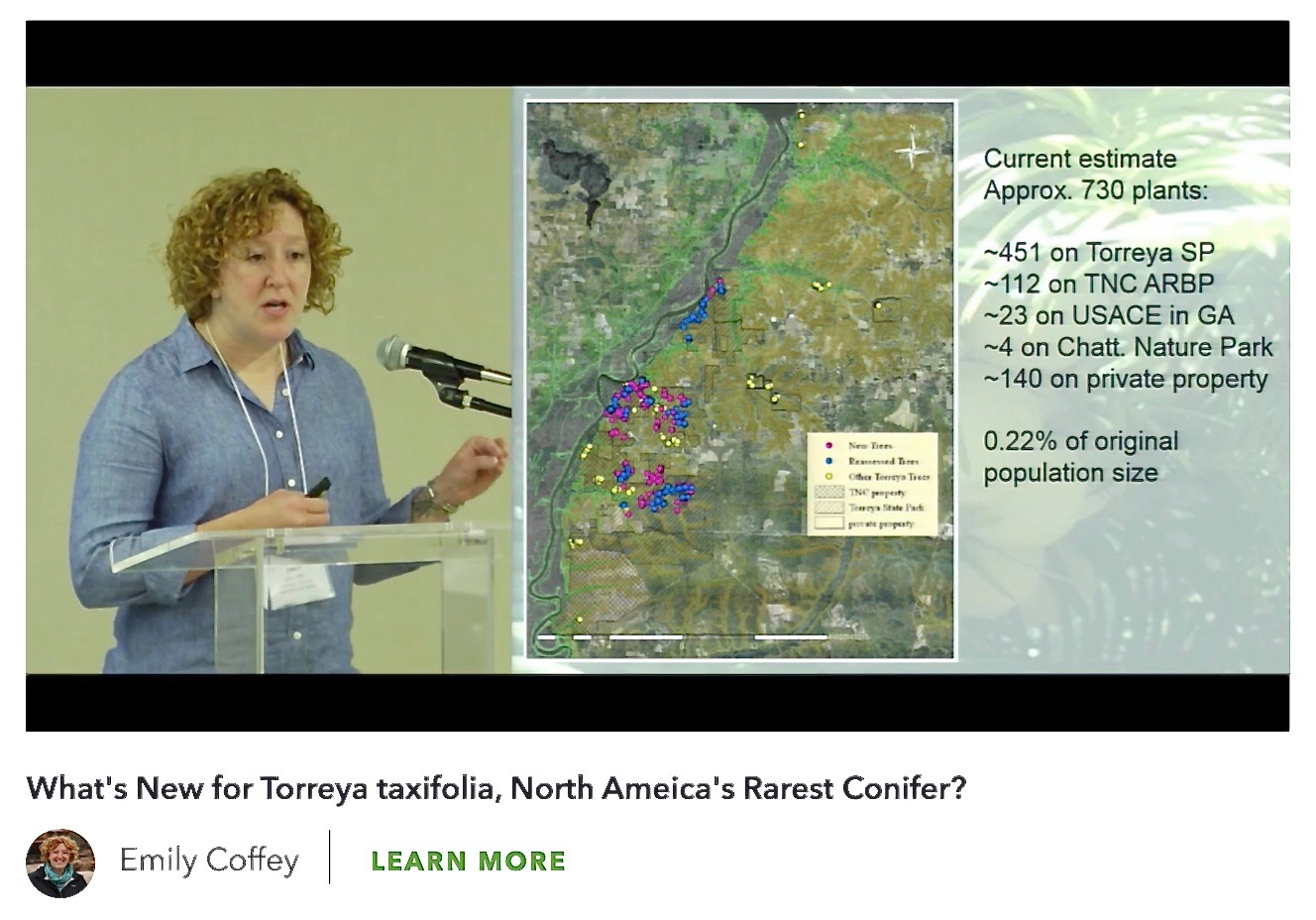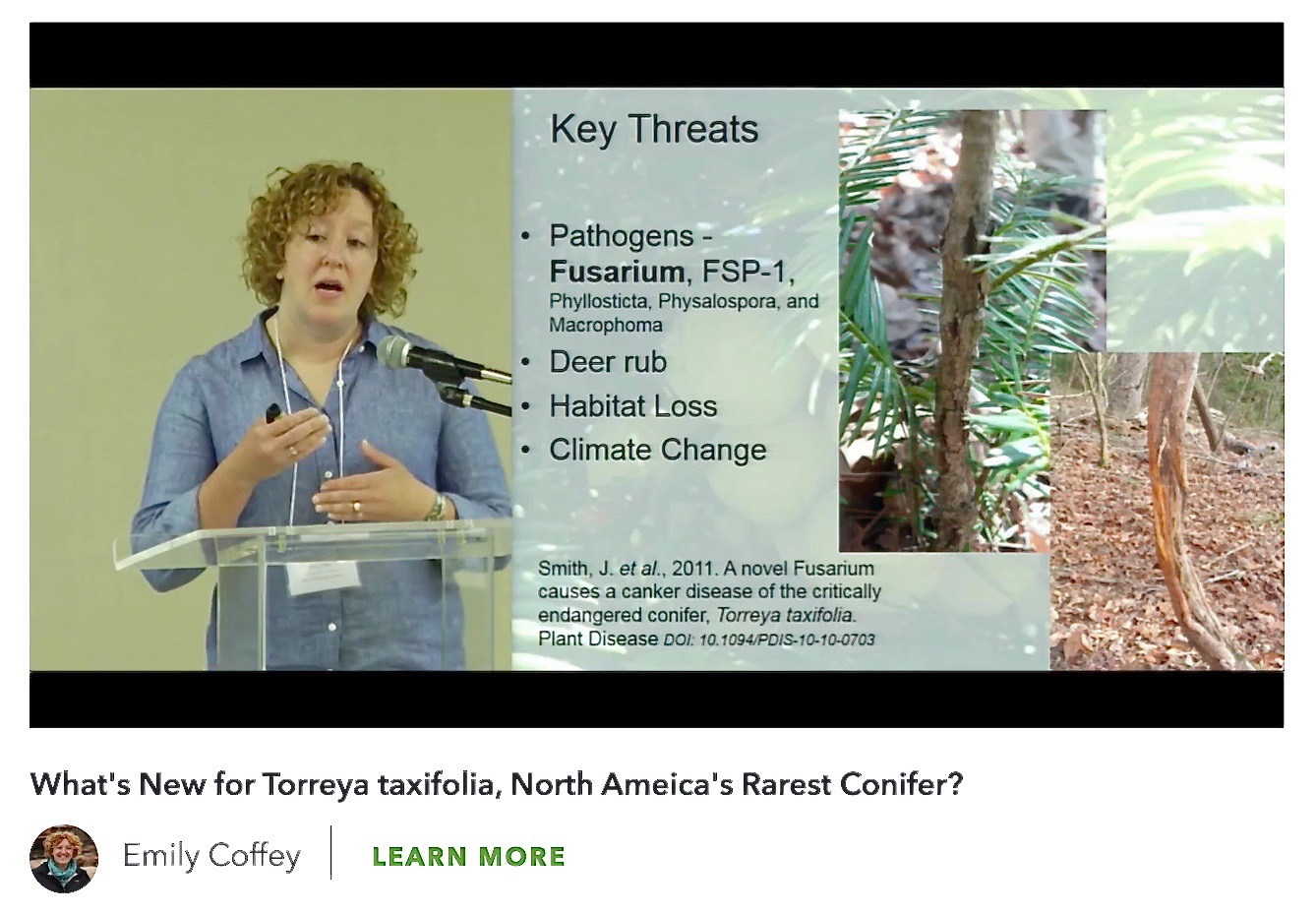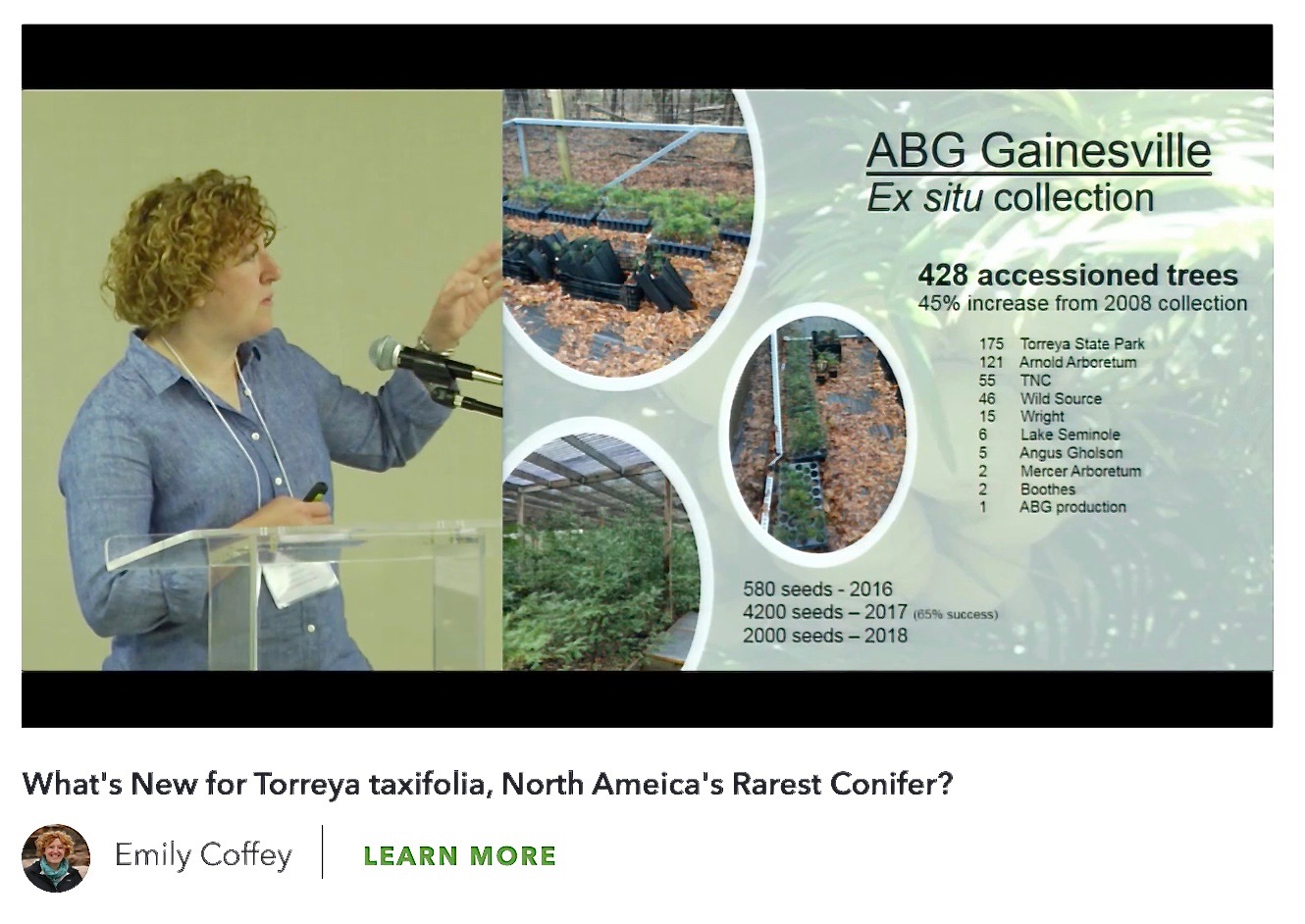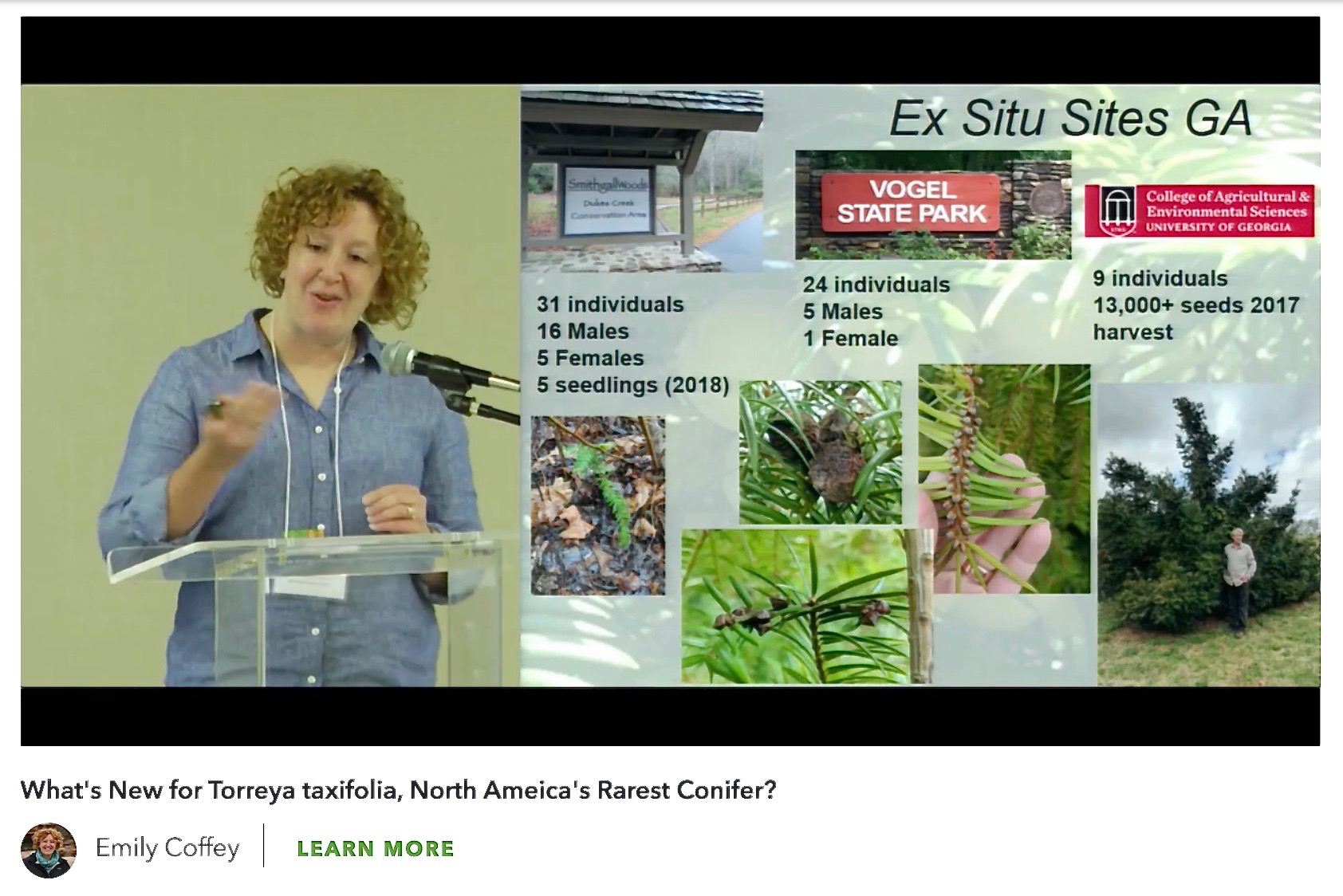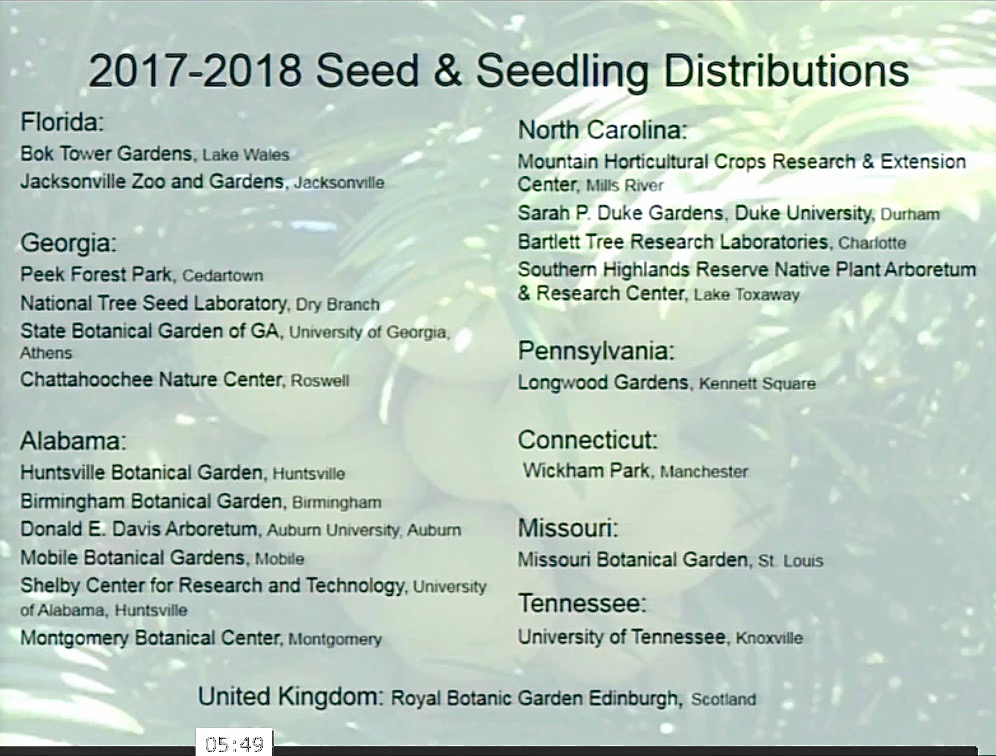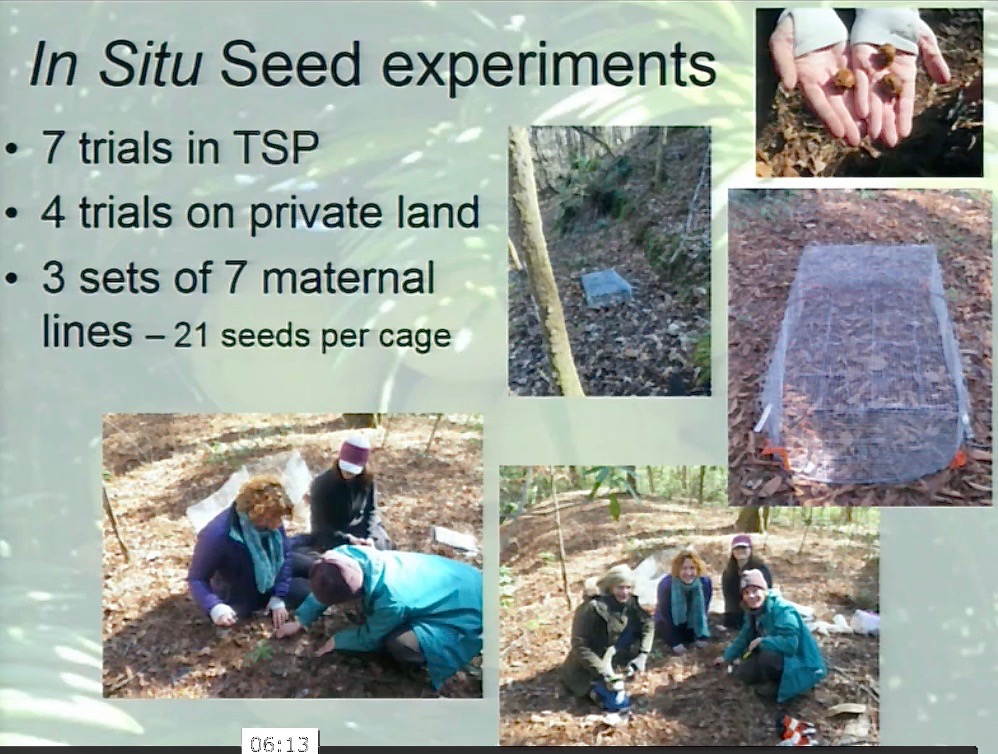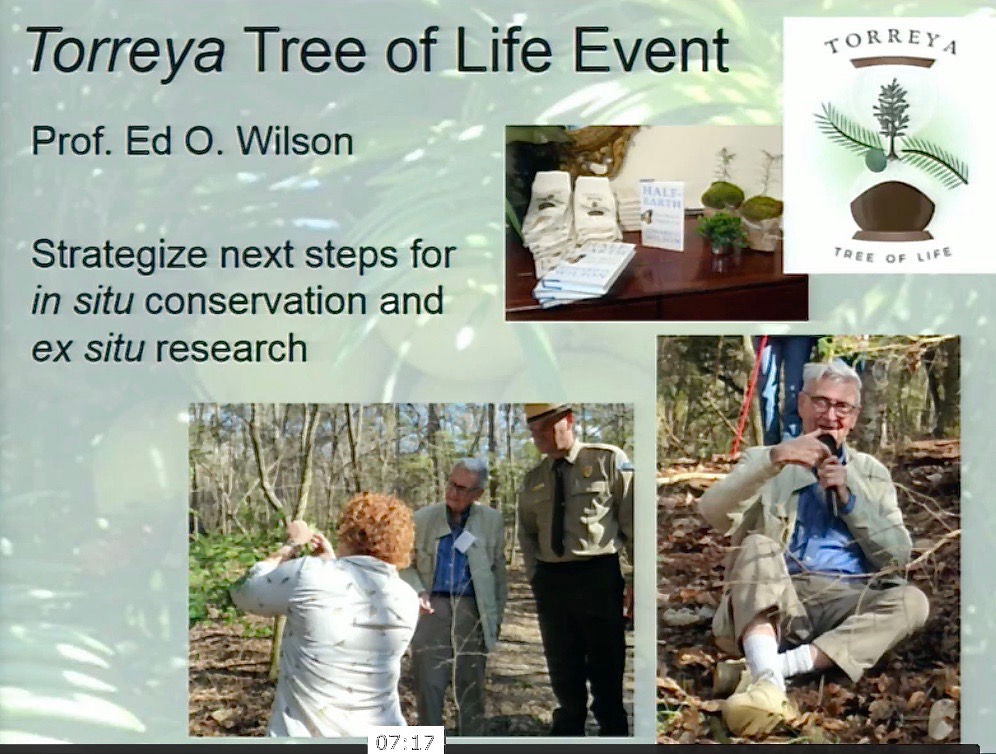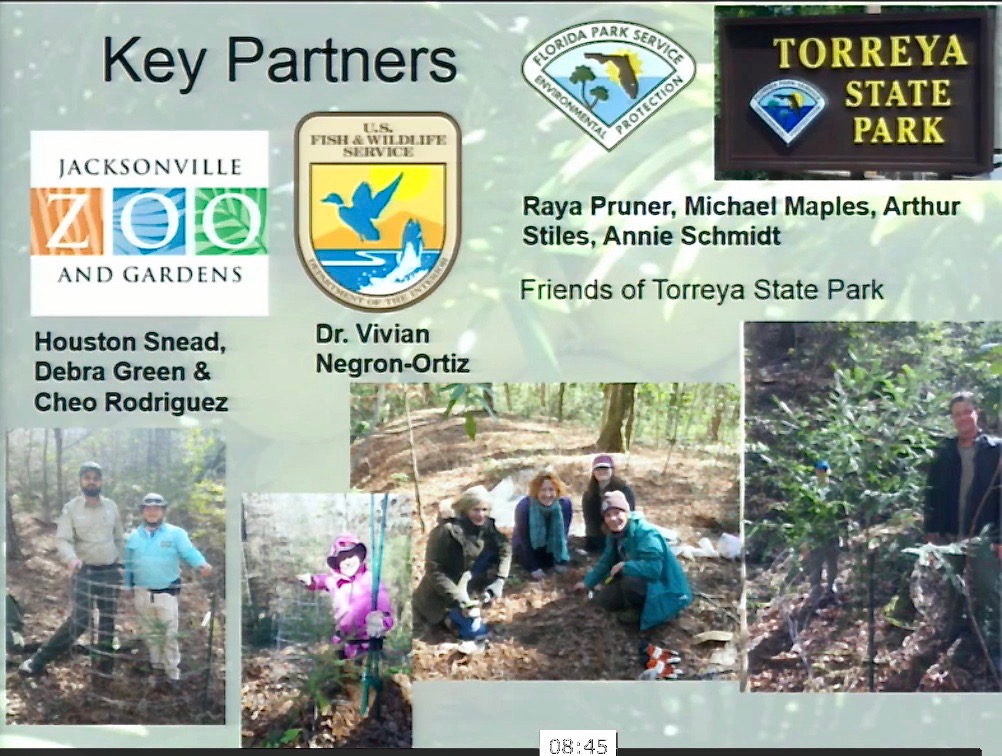by Emily E. D. Coffey, Ph.D., Atlanta Botanical Garden
Presentation 4 May 2018
Posted on website of Center for Plant Conservation
National meeting of the Center for Plant Conservation
Fort Worth Texas, USA
and on the Center's vimeo site
JUNE 2021 NOTE by Connie Barlow, editor of Torreya Guardians website:Our group has been asked by Atlanta Botanical Garden (ABG) not to include any of their web postings on our website. We do, however, briefly list and link all Torreya-related resources (posted by any agency or institution) on our Efforts to Save Torreya taxifolia webpage. This 2018 talk by an ABG staff person is also listed on that page. However, because this video presents crucial data on in situ and ex situ seed production, visual and spoken-word excerpts are included here, with no annotation or comment.This inclusion is also appropriate because 5 weeks before Dr. Coffey's presentation, I personally submitted a Freedom of Information Act query (to US Fish & Wildlife Service) seeking information on SEED PRODUCTION:
"... " As founder of the citizen activist group Torreya Guardians, I would like to know documentation of seed production year by year, beginning in 2007. I am aware that the Blairsville site has likely been producing seeds every year since 2007, yet there is no online documentation of quantities and year-by-year reporting of ultimate destinations of the precious seeds. Please provide me (and thereby our group of citizens) this information. You can access our group's website at http://www.torreyaguardians.org/."On 29 March 2018, the agency approved this FOIA query for "expedited processing." Some documentation was provided by the agency during the following months, but not nearly with the numerical detail evidenced here by Dr. Coffey in this talk. The process was deemed fulfilled by the agency end of August. All documents and communications associated with the FOIA are listed and linked from the page on this website titled FOIA data request 2018 by Connie Barlow re Torreya taxifolia.END OF EDITOR'S NOTE
VIDEO: "What's New for Torreya taxifolia, North America's Rarest Conifer?" is a powerpoint talk by Dr. Emily Coffey, delivered 4 May 2018 at the national meeting of the Center for Plant Conservation. (Access the Torreya taxifolia page on the CPC website.)
CAPTION of the video on the CPC website:Torreya taxifolia, known as the Florida Torreya, is one of the rarest conifers in the world. Once found as a canopy tree, Torreya is an evergreen dioecious tree endemic to a narrow range of bluffs and ravines adjacent to the Apalachicola River in northwest Florida and extreme southwest Georgia. In the mid-Twentieth Century, this species suffered a catastrophic decline as all reproductive age trees died from a disease (Fusarium torrayae) that remained unknown until very recently. In the decades that followed, this species did not recover. What remains is a population approximately 0.22% of its original size, which is subjected to changes in hydrology, forest structure, heavy browsing by deer, loss of reproduction capability, as well as dieback from fungal disease. Atlanta Botanical Garden’s dedication and efforts to protect Torreya has furthered understanding of its ecology and life cycle as well as the decline of this once majestic species. We present the new in-situ and ex-situ seed experiment we are conducting at ABG as part of the recovery effort for this species.
SCREEN CAPTURES
with timecodes, and occasional excerpts of spoken words by Dr. Emily Coffey
TIMECODE 00:18 "... At ABG we have been working on this particular plant since 1989... [original rooted cuttings] doing well to the point that we actually have a seed orchard out of them." [The slide itself is about the size and location of the in situ wild population and vocal description of it continues through timecode 01:30]
TIMECODE 01:31 "due to several leading causes, the most important is a Fusarium ... It's actually taken out all of the mature trees, there's only a few sexually reproducing trees in the wild. We have found seed on two in the last five years."
TIMECODE 02:41 [ABG ex situ planting is at Gainesville GA, not Gainesville FL] ".... We have a Blairsville site [n. Georgia] where we found that they were starting to reproduce cones, so back in 2016 we collected all the cones that we could. We were able to propagate 580 of those seeds. In 2017 we collected [4,200] seeds."
TIMECODE 4:11 "So this year [Fall 2017] we actually had a bumper crop. We had 13,000 seeds that we collected from our Blairsville site.... The biggest issue is that they are recalcitrant so that the only way to store them is through somatic embryogenesis. We have cryo storage but 13,000 seeds is a lot of seeds. So we were not able to obviously utilize all of those seeds. But we have been able to distribute a large number of them."
TIMECODE: 5:43 "So this [slide] is just some of the institutions that we were able to distribute over 4,000 seeds to and 2,000 seedlings this past year.
So there are 21 institutions across 8 states...."
TIMECODE: 6:08 "Something that we got to do this year that I was really excited about: we got to do the first in situ seed experimental trials ... "in Florida and up at our Gainesville [Georgia] site. We have 7 trials on Torreya State Park [TSP] land and then 4 trials on private landowner.... We have hogs which are also an issue in this area, so the caging is meant to also keep squirrels and hogs out."
TIMECODE: 7:04 "We had a really great event with the University of Florida down in Torreya State Park, which was called the Torreya Tree of Life Event. Professor Ed Wilson came down; he was our keynote speaker.... In the 1950s he had noted that there was a decline in the trees and there was something wrong with them.... We had 95 people attending, and we got to go out and try to strategize the next steps forward: how we will raise funds to do more molecular work.... We also are looking at developing new techniques to protect the trees and gain resistance against the Fusarium."
TIMECODE: 8:30 [ending]
Access the Torreya taxifolia page on the CPC website.
